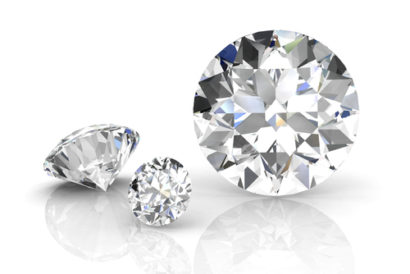
Pavé an ancient setting technique. Learn more.

What is pave?
Pavé (pronounced pah-vay) derives its name from France meaning to pave and is an ancient setting technique. There is little doubt so many are attracted to this style because it showcases the fire of diamonds and other translucent stones since very little metal is seen in the finished piece of jewelry when the stones are set by a master setter.
Typically in pavé settings, a very small hole is drilled in the metal and then the stone is set in that opening and “beads” (at least 2) are raised around the stone to serve as prongs.
What is micro pave?
As the name would suggest, micro pavé uses much smaller stones than traditional pavé, and is a much more recent technique. The result is still a pavement of diamonds (usually 2 or more rows), but there are some key differences that distinguish micro pave.
Micro pavé can be distinguished because the stones are set directly into the solid metal as opposed to being set into a pre-drilled hole. The surface behind the stones is smooth. Stones are tightly woven with no separations between the rows. The rows form a “honey-comb” pattern and are set in a straight line or circle. Size of stone in micro pavé is typically no larger than 1.2mm. Stones are unvarying in size
What is the quality of stones used in micro pavé settings? Why is there a greater cost?
Although very small in size (.50 mm – 1.2 mm), the stones used in micro pavé are cut with ideal proportions. They have excellent color and clarity as they are not large stones, and are therefore affordable. Often, a ring will contain hundreds of these miniature stones. However, the labor cost for the expert to set the stones causes micro pavé to be exclusive and more expensive.
What is the correct method of setting micro pave stones?
Setting micro pavé is labor-intensive and can only be done by a few master setters with the aid of high magnification. The result is absolutely striking when light reflects off the rows of diamonds or other colored stones from all angles.
The setter must create a pattern with the stones. There are primarily two ways to secure the stones: 6 beads will hold 3 stones, or 4 smaller beads will hold each stone. Typically the 4 bead technique is preferred because you will see more scintillation from the stones since less metal is used. Also since there are no shared prongs, stones are less likely to fall out. The end result?
Many pieces come together at once! First and foremost there is total symmetry: using stones of the same size that have the ideal cut with exact undercutting to make stones seem as though they glide on the surface of the metal. As light hits the pavement of stones, it looks similar to sequins covering the plain fabric of a dress. Not only do the stones cover the heavy metal, but like the sequin dress, they appear to change in texture depending on the lighting. Truly a work of art!
Will I lose a stone? Does that mean my stones were not set expertly? Can my stone be re-set?
In my office, I keep a page torn out of a fashion magazine. I think it’s an issue of “W,” but I am not sure. One of my employees brought it to me, and I can never thank him enough because it’s a great illustration of how commonly a stone can be missing from a micro pavé setting. There are a few rings featured in an advertisement and on one of them, clearly visible to the reader, there is a stone missing. I realize how many editors comb over these ads before they are published, not to mention the professional photographers, and yet this detail is still easily missed.
If you choose to own a captivating ring with micro pavé set stones; there is a good chance you will lose a few stones over the course of a lifetime, even when the best setting techniques are used. When you enjoy a piece of jewelry, you wear it! Stones may become dislodged if the ring bumps against a hard surface, or after many years the metal can begin to wear away slightly.
A jeweler willing to replace the occasional missing stone makes all the difference!
We recommend that your custom pieces be checked annually to assure that they stay in great condition. Contact us to schedule a date to have your jewelry serviced.

Comments are closed.